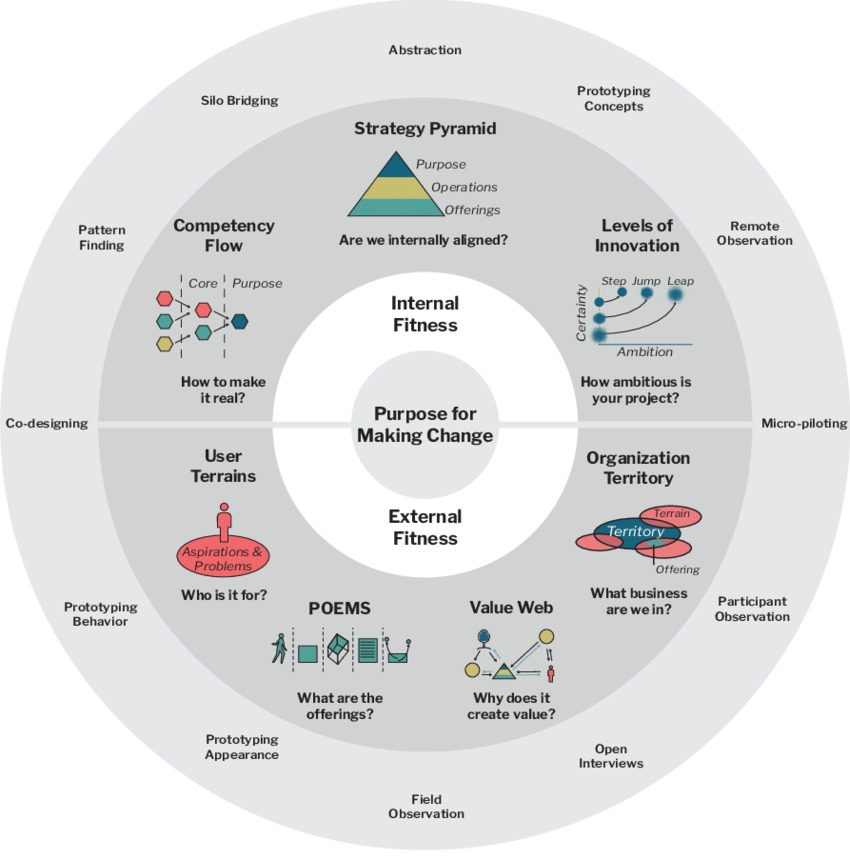In the dynamic world solving complex problems design methods is increasingly being used to grapple with complex societal challenges. One standout approach is the Whole View Model, developed by renowned design expert Patrick Whitney. This model encourages designers to embrace multiple dimensions and stakeholders involved in a given challenge, ensuring a thorough understanding of the problem space. Let’s dive into the key elements of the Whole View Model and discover how it enhances the designing process.
At its core, the Whole View Model encompasses a conceptual design structure called the Whole View. It comprises of three components Purpose, Frameworks and Methods that revolve around the driving impactful changes within an ecosystem. The goal is to enhance its capability to create significant leaps forward and expand the impact at scale.
The Whole View Model emerged from a realization that relying solely on uncovering unmet needs and hoping clients would pay for any novel solution was not sustainable. Instead, the focus shifted towards creating a framework that allows diverse stakeholders involved in the change context to generate their own solutions within a holistic and coherent structure.
By considering the viewpoints of users, offerings, value creation, operations, and strategies, all centered around the purpose of driving change, the Whole View Model helps multidisciplinary teams organize and visualize information and ideas. This visual representation makes complex concepts less abstract and more easily understood compared to relying on words alone.
Implementing the Whole View Model enables organizations and eco-systems of stakeholders to embark on exploratory initiatives with broader perspectives in significantly less time than traditional management processes. It serves as a powerful tool for describing complex situations and exploring alternative paths forward.
By rigorously applying the Whole View Model, diverse stakeholder perspectives are surfaced, and contradictory viewpoints become explicit, debatable, and less abstract than what can be conveyed through words alone. This allows for a more comprehensive and inclusive approach to problem-solving within the design thinking process.
In summary, the Whole View Model for Design offers a holistic approach that enhances problem-solving by considering multiple dimensions and stakeholder perspectives. By adopting this approach, organizations and change initiatives can unlock innovative solutions and drive meaningful change in a more sustainable and inclusive manner.
In India Bharat Design Labs with its initiative “Leap” in partnership with MindEscapes® provides an immersive experience of using Whole View Model for societal impact.
